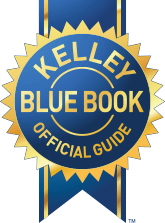
Kelley Blue Book Monthly Market Report: Compact-Car Values on the Rise; Market Stabilization Years Away
IRVINE, Calif., Oct. 8 /PRNewswire/ -- Kelley Blue Book, www.kbb.com, the leading provider of new- and used-car information, today releases the October edition of the Kelley Blue Book Monthly Market Report. In this month's report the company's analysts and statisticians are beginning to see an uptick in the small car market, which had been hit severely when gas prices stabilized. Also noted in this month's report is a look forward at the car market in the wake of 'Cash for Clunkers.'
Values in the car-based segments have underperformed all year, dropping consistently as gas prices stabilized. This drop in values may have been an overcorrection, which partly explains the rebound in values in late August that continued to climb through September. Used-car values do however continue to benefit from the low supply and shortage of new vehicles following the end of the 'Cash for Clunkers' program. With fewer new vehicles in the marketplace, used vehicles continue to be a more affordable alternative driving prices up across the board.
"Several cars that might have been traded in were scrapped in the last few months through the 'Cash for Clunkers' program and new-car inventories are just as low, helping to drive used-vehicle values up," said Alec Gutierrez, senior market analyst, Kelley Blue Book. "The compact market may have actually gotten too low this year due to irrational behavior and the overcorrection of the economy and gas prices."
'Cash for Clunkers'
The 'Cash for Clunkers' program concluded on August 24, yet its effects are still rippling through the automotive industry. While new-vehicle sales for July and August outpaced any other month this year, September sales have shown that the lift to new-car sales was only temporary.
"Many manufacturers increased production levels in August as it became clear that the 'Cash for Clunkers' program was moving metal and shrinking inventories," said Gutierrez. "With that increased production call taking place in August, those new inventories should be hitting showrooms in the next 30 days; however, it remains to be seen if demand will be sufficient to support the increased levels of inventory coming into the market."
On that note, if inventory levels exceed post 'Cash for Clunkers' demand, manufacturers will be forced to offer incentives to move all of the excess inventory as we have seen demand shrink following the program. If this comes to fruition, an increase in inventory and diminished demand will put downward pressure on both new- and used-car values.
The strong new-car sales reported in July and August have led to an inventory crunch at many dealerships, leaving some dealers with no choice but to keep prices relatively high in order to manage their current stock. Higher new-vehicle transaction prices have led car shoppers to consider buying more affordable late-model used vehicles as an alternative to more expensive new vehicles. This trend can only be reversed if sufficient inventories of new vehicles are restored to dealerships.
The marketplace for both new- and used-vehicles will only stabilize once inventories reach a level consistent with demand and, more importantly, conditions in the overall economy improve. Based on current indications, this won't be any time soon. Unemployment has continued its upward trajectory coming in at 9.8 percent for September while the U.S. GDP (gross domestic product index) has declined for the past three consecutive quarters. With so much uncertainty in the economy and automotive industry, we may be several years away from what can be considered a recovery in the marketplace.
The question remains, once economic conditions improve, what will be the new 'normal' market? Can the industry be sustained at 12 or 13 million units per year? If we are ever to reach a level of sustainability in the marketplace, the pressure will be on the manufacturers to manage their business like no other time in history.
For additional information, please visit www.kbb.com/media for the latest Blue Book Market Report. To subscribe to the monthly Blue Book Market Report, please email pr@kbb.com.
About Kelley Blue Book
Since 1926, Kelley Blue Book, The Trusted Resource®, has provided vehicle buyers and sellers with the new and used vehicle information they need to accomplish their goals with confidence. The company's top-rated Web site, www.kbb.com, provides the most up-to-date pricing and values, including the New Car Blue Book® Value, which reveals what people actually are paying for new cars. The company also reports vehicle pricing and values via products and services, including software products and the famous Blue Book® Official Guide. According to the C.A. Walker Research Solutions, Inc. - 2009 Spring Automotive Web Site Usefulness Study, kbb.com is the most useful automotive information Web site among new and used vehicle shoppers, and half of online vehicle shoppers visit kbb.com. Kbb.com is a leading provider of new car prices, car reviews and news, used car blue book values, auto classifieds and car dealer locations. No other medium reaches more in-market vehicle shoppers than kbb.com.
SOURCE Kelley Blue Book
SOURCE: Kelley Blue Book
Web site: http://www.kbb.com/
|
Director, Public Relations |
|
|
| For general or customer service inquiries, please call 1-800-258-3266. |
||
|
|
||


